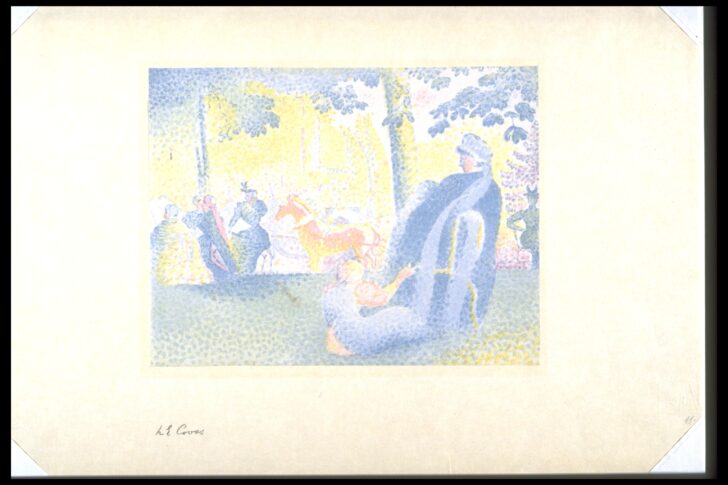Les Nourrices aux Champs-Elysées (The Nursemaids on the Champs-Elysées)
Henri Edmond Cross

Description
A disciple of the Neo-Impressionist painter Georges Seurat, Cross tried to capture a more intense sensation of light by building up his forms with small touches of pure, complementary colors. In 1898 he was asked by "Pan", an international art and literature magazine, to contribute a color lithograph. He submitted a view of the park along the elegant Avenue des Champs-Elysées, where one could see nursemaids characteristically dressed in voluminous capes and bonnets with long streamers caring for the children of the wealthy.
In lithography a drawing is made with greasy materials—lithographic crayon or an oily ink called tusche—on a polished stone or zinc plate. When the surface is washed clean with a solvent, only vestiges of the drawing remain as greasy marks. Ink is then applied to the surface with a hand roller. It adheres solely to the greasy, sensitized image areas. A sheet of paper is laid on top of the printing surface, and then passed through a roller press.
In color lithography, the artist draws on a series of stones or plates, one for each hue to be used. After dissolving the black materials that the artist employed in drawing these images, he covers each stone with a different color of ink. Every hue must be printed in correct registration, so that the various colors and forms coincide in position. For this reason color lithography requires much more skill than work in monochrome.
Usage Rights:
If you are interested in using an image for a publication, please visit https://umma.umich.edu/request-image/ for more information and to fill out the online Image Rights and Reproductions Request Form.